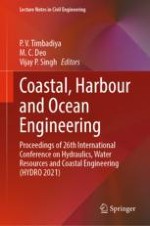This book comprises the proceedings of the 26th International Conference on Hydraulics, Water Resources and Coastal Engineering (HYDRO 2021) focusing on broad spectrum of emerging opportunities and challenges in the field of coastal, harbor and ocean engineering. It covers a range of topics, including, but not limited to, coastal disasters including tsunamis, cyclones and storm surges, sea level rise, coastal structures and oceanography, wave-structure interaction, etc. Presenting recent advances in the form of illustrations, tables, and text, it offers readers insights for their own research. In addition, the book addresses fundamental concepts and studies in the field of coastal, harbor and ocean engineering, making it a valuable resource for both beginners and researchers wanting to further their understanding of hydraulics, water resources and coastal engineering.
